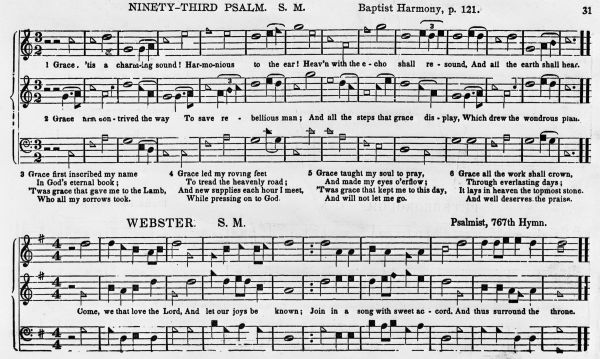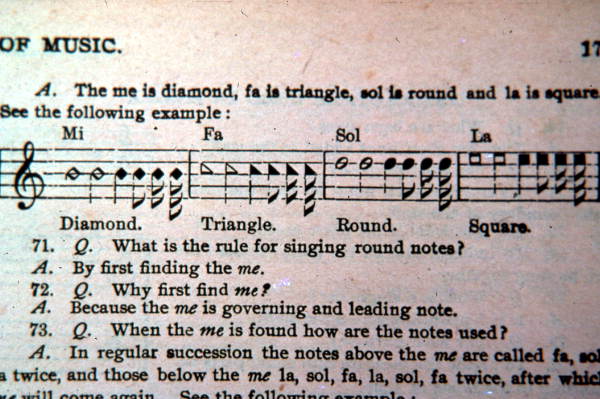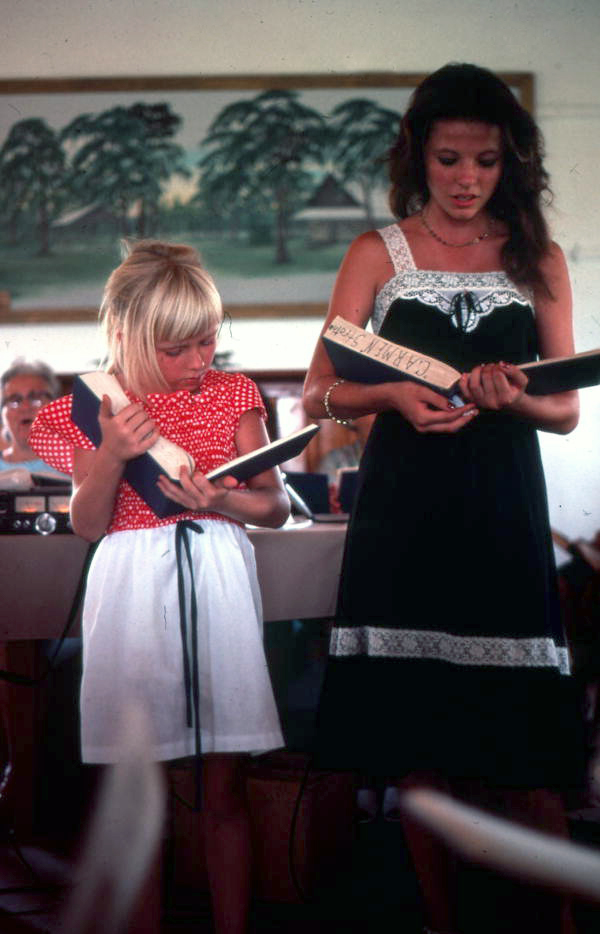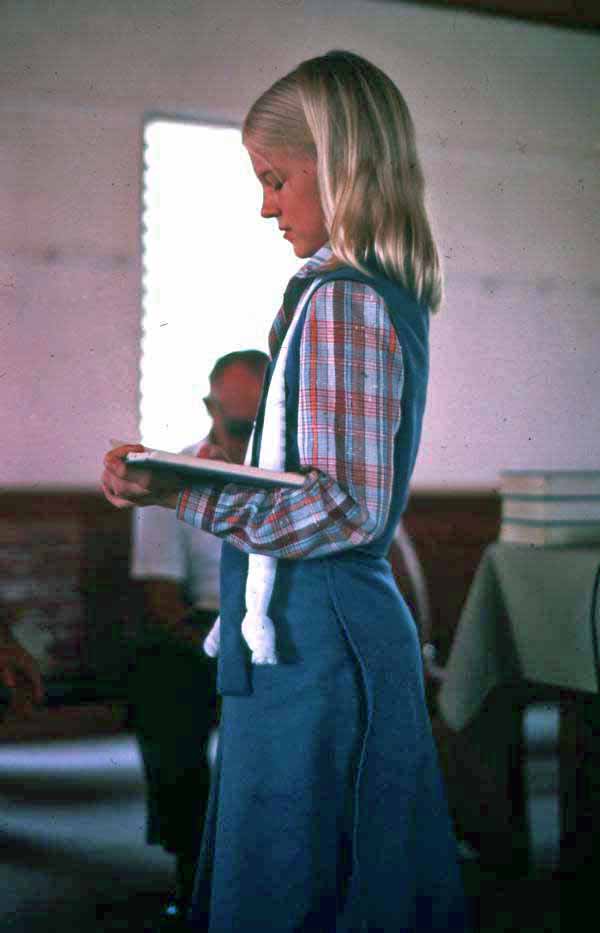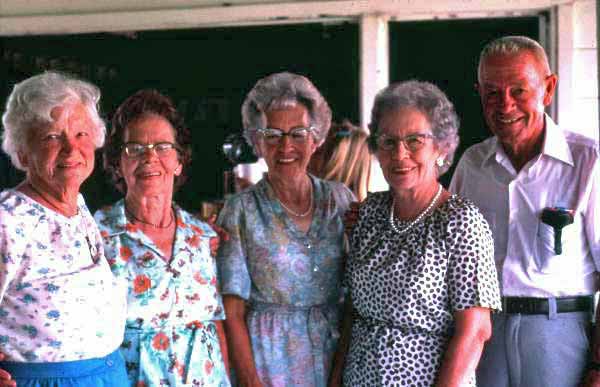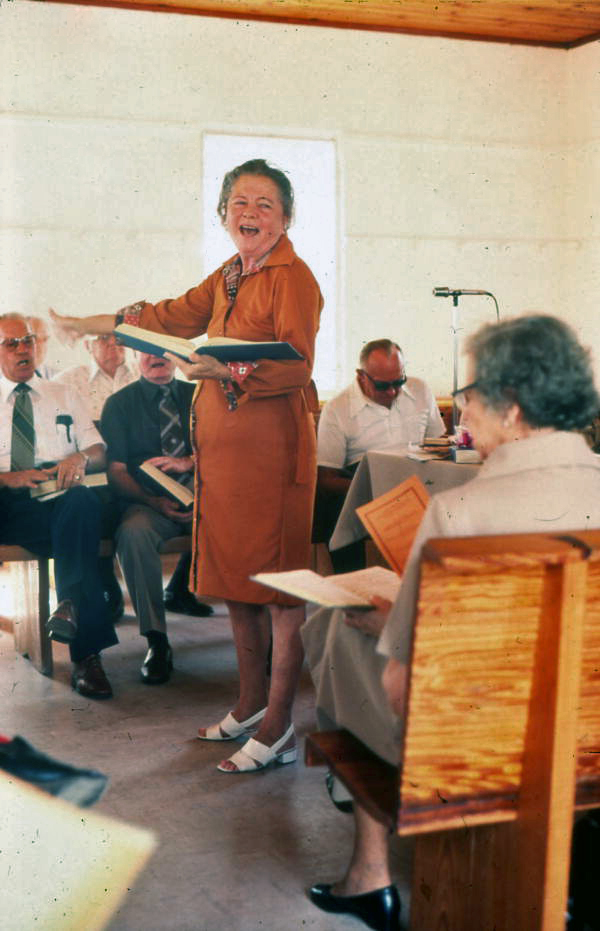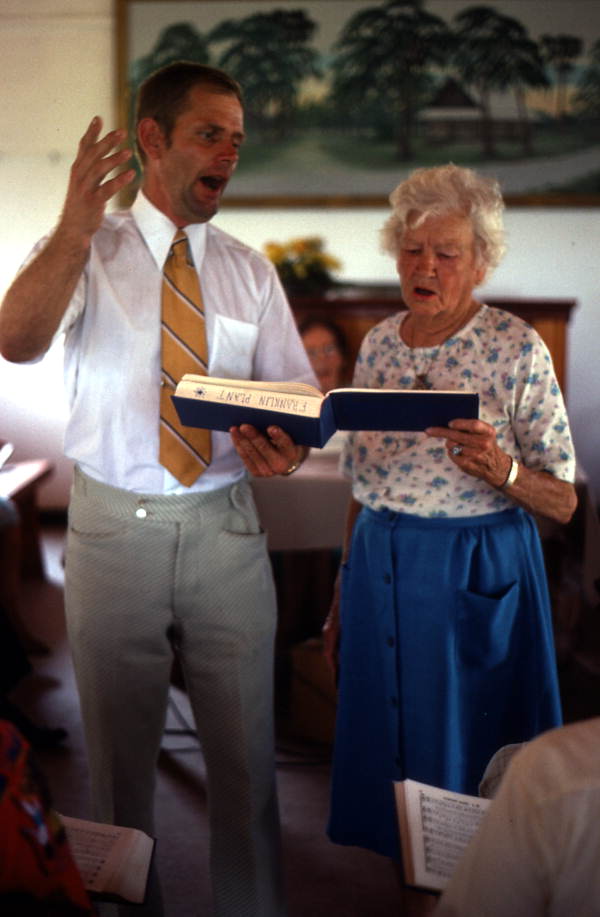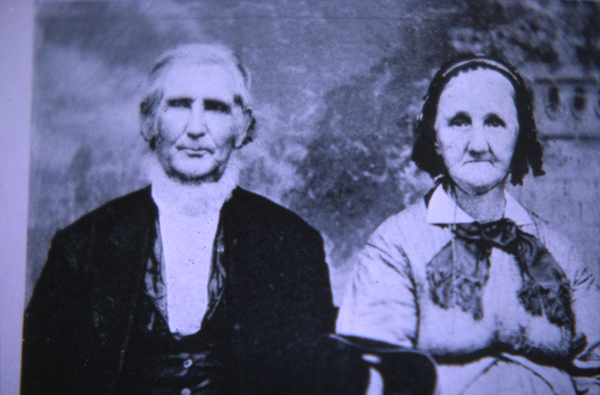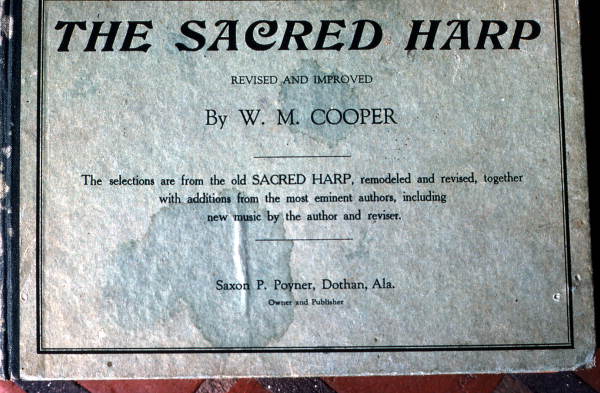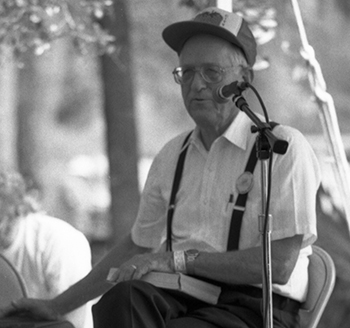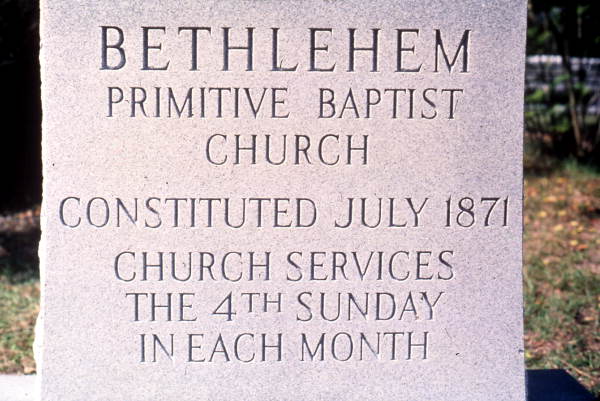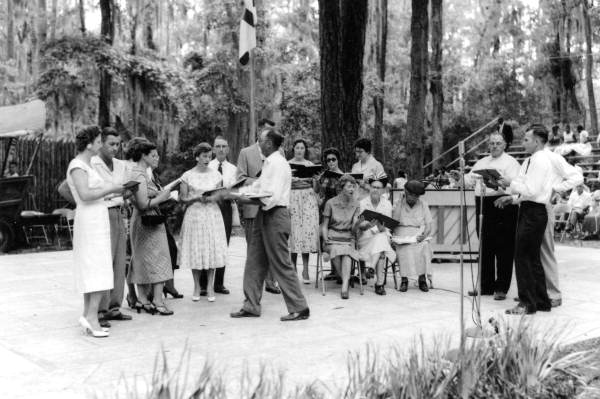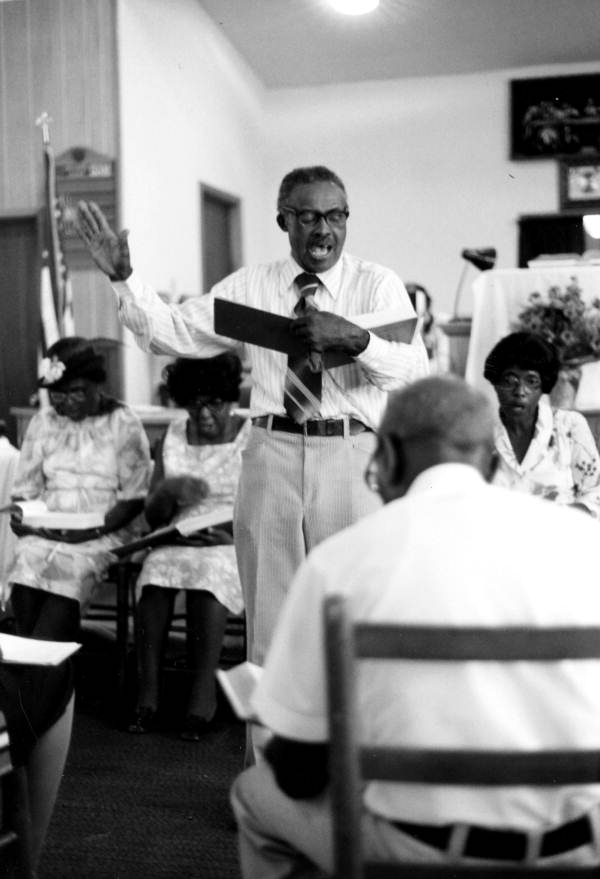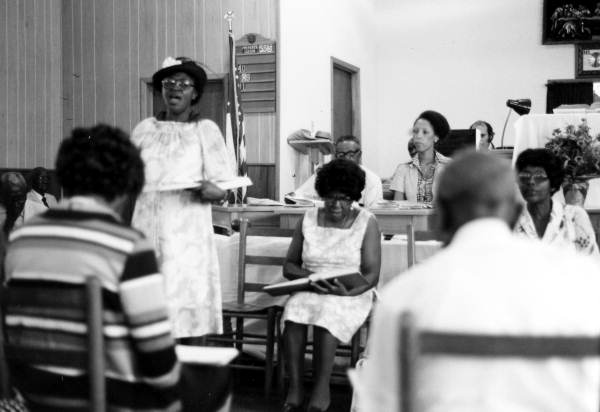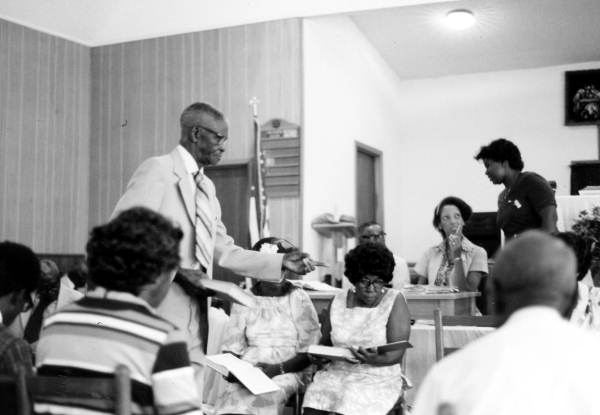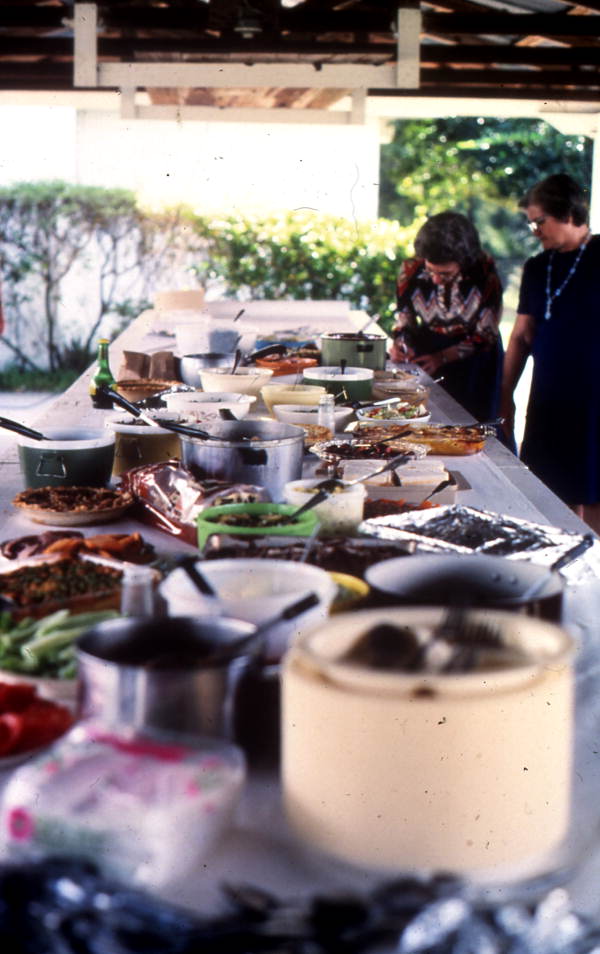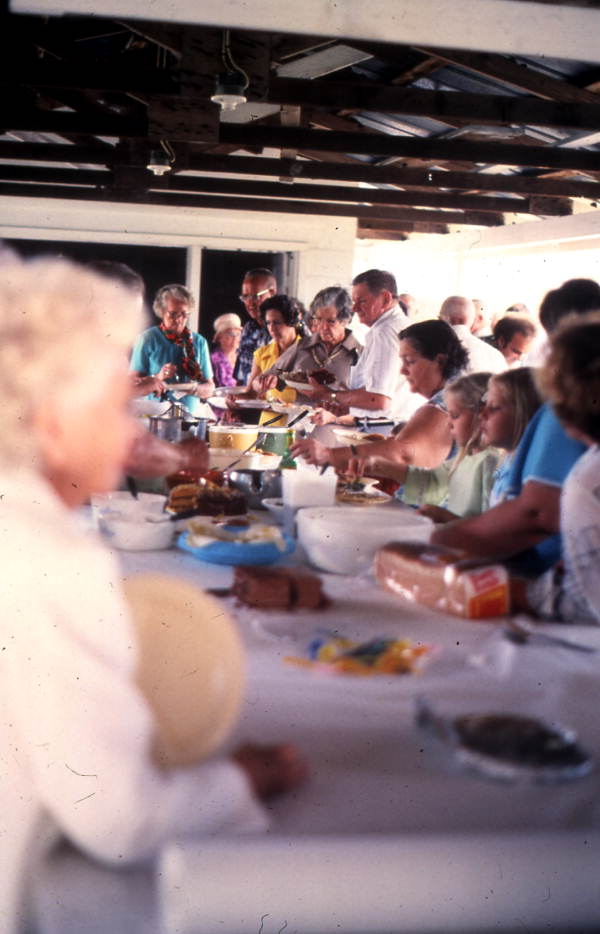Shape Note Singing in Florida
Photos and History
American shape note singing is a tradition that goes back to the New England singing schools of the 18th century. It is an easy method for learning written music and was intended to replace lining out – the call and response form of singing in which a leader chants each line of a hymn to the congregation before it sings them.
Shape note singing in Florida can be traced back to the mid-19th century, shortly after the publication of The Sacred Harp. The tradition was strongest in the Panhandle area but extended all the way into Hillsborough County and throughout Central Florida. The West Florida Sacred Harp Singing Convention, started in 1869, is the state's earliest shape note convention on record.
Shape Notes
Four shapes represent the seven notes of the major scale. The first three notes of the scale are represented by a triangle, circle and square. These shapes correspond with the syllables "fa," "sol" and "la." For the fourth, fifth and sixth notes of the scale, the shapes and syllables are repeated. For the seventh note, also called the leading tone, a diamond is used with the syllable "mi."
The complete scale would read as follows: fa, sol, la, fa, sol, la, mi, fa.
David Lee is a singing master from Hoboken, Georgia. The scale is demonstrated here by Lee's singing school class (recorded at the 2000 Florida Folk Festival in White Springs):
Singing Schools
By the 1750s, music teachers (known as singing masters) were popularizing the shape note system throughout New England. They went from town to town, conducting singing schools and selling song books. These schools, typically lasting around two weeks, allowed community members to mingle and break the daily routine of their lives. Singing schools would end in an “all-day singing,” or concert.
Teachers divided their students into sections: male basses, mixed tenors, mostly female trebles, and female altos. The sections stood facing each other around a "hollow square." Singers learned to read music and also learned song leading skills.
The Sacred Harp
When church organs became popular in New England along with a more European approach to composition, the singing school tradition fell out of favor. Singing masters moved to the more rural southern states, where they could still hold classes and sell books.
The Sacred Harp was published in 1844 in Hamilton, Georgia by music teachers B.F. White and E.J. King. The book included previously published songs from earlier shape note books, original compositions, and arrangements of traditional melodies from American folk music. The Sacred Harp took root in the rural American South and was one of the last and most popular of the four-shape tune books.
This tune, “Coronation,” was written by American carpenter and composer Oliver Holden in 1793 and was typical of the hymns included in The Sacred Harp (recorded in 1980 at the Bethlehem Primitive Baptist Church in Old Chicora):
The Revisions
The book managed to survive the turmoil of the Civil War and Reconstruction, but by the turn of the 20th century it was being replaced by a new seven-shape gospel tradition. In 1902, in order to keep The Sacred Harp relevant, Wilson Marion Cooper of Dothan, Alabama, made the first substantial and lasting revision of the book.
Controversially, Cooper added alto parts, new original compositions, and popular tunes, including this classic gospel-hymn, “Sweet By and By” (recorded in 1978 at the Bethlehem Primitive Baptist Church):
Some viewed the Cooper revision as inauthentic and too modern. In 1936, the Denson revision was published, which reverted to more traditional compositions. By the 1960s, the Denson revision was growing in popularity as part of the American folk music revival, while the Cooper revision made few inroads outside of northern Florida, southern Georgia, and southern Alabama.
Shape Note Singing in Florida
While singing schools became less common during the 1900s, all-day singings took their place as the forum for shape note singing in the South. In Florida, the Revised Cooper Edition of The Sacred Harp became the traditionally favored four-shape tune book. Recurrent all-day singings took root throughout the central and northern regions of the state and continue to this day.
The Bethlehem Primitive Baptist Church singing in Old Chicora (present day Lithia) in Hillsborough County is held every fifth Sunday. Matthew Lane Albritton, a patriarch of the Old Chicora community, explains the history of shape note singing in the area (from the 1980 Florida Folklife Program Sacred Harp presentation):
African-American Shape Note Singing
African-American shape note singers were likely singing from The Sacred Harp as far back as the Reconstruction Era. All-day singings, like the Southeast Alabama and Florida Union Sacred Harp Singing Convention, date back to 1893. Some black song leaders practiced "walking time," a steady march back and forth in the hollow square.
Like white singing communities, African-American singing communities adopted seven-shape gospel singing alongside four-shape traditions. The Florida-Alabama Progressive Seven Shape Note Singing Convention, founded in 1928 in Crestview, Florida, makes use of inexpensive paperback seven-shape songbooks containing both recently published gospel songs, as well as old standbys.
M.L. Long leading shape note singers at the Southeast Alabama and Florida Union Sacred Harp Singing Convention in Campbellton, 1980
The Colored Sacred Harp
Though the Cooper book was primarily used, African-American singers also sang from The Colored Sacred Harp, which was compiled by composer Judge Jackson and published in 1934. The book features original compositions by African-Americans, including “Florida Storm,” a song by Jackson about the Great Miami Hurricane of 1926.
Here, his son Japheth leads the tune (recorded at the1980 Southeast Alabama and Florida Union Sacred Harp Singing Convention):
Dinner on the Grounds
Singers gather to sing all day, breaking midday for "dinner on the grounds," a time to socialize and enjoy homemade dishes prepared by local singers and community members.

 Listen: The Blues Program
Listen: The Blues Program